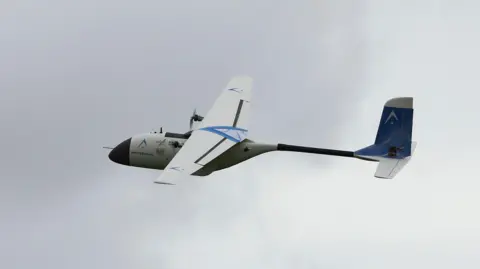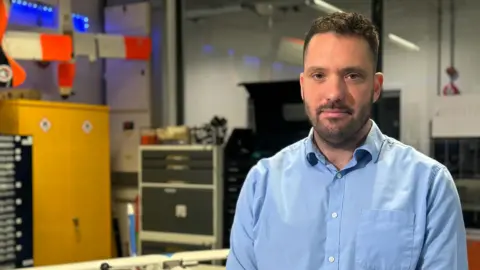How a drone can have its own 'nervous system'
 University of Southampton
University of SouthamptonScientists are testing a new type of drone that may be able to keep operating in the sky for longer - owning to the fact it has its own version of a nervous system.
Currently, cargo-carrying drones are required to make regular pitstops for manual safety checks, which limit their use and and increase operating costs.
But experts from the University of Southampton have created a drone with an optical fibre system, which researchers said can monitor its own health just like the body's nervous system.
The team said the technology would make future drones more reliable and cost-effective.
The system uses a unique technique called optical speckle, which projects specific images dependant on what the optical fibre nervous system feels.

These can be interpreted using AI algorithms to assess the health of the drone, said Dr Chris Holmes, one of the lead researchers.
"This speckle system keeps track of the stresses and strains on the drone, helping ground crews spot issues early without needing to land the drone as often for inspections," he said.
And he said the fact the drones used light to send back information rather than electricity meant they avoided the interference from radio frequencies that electronic systems have.

The optical fibre system has already shown promise when tested on a drone, developed by undergraduates at the university.
Aerospace engineering graduate Toby King-Cline, 23, who led the student team, said the technology could change the way drones are used in many industries and that it was exciting to see the live data from the fibre system.
"It showed that the technology could keep drones operational longer without the need for extensive ground crews," he said.
Dr Holmes said they were aiming for the technology to be commercialised by 2025.
You can follow BBC Hampshire & Isle of Wight on Facebook, X (Twitter), or Instagram.
